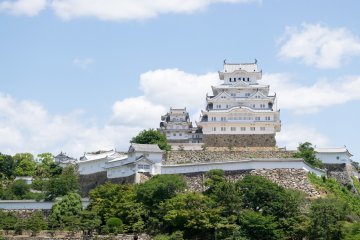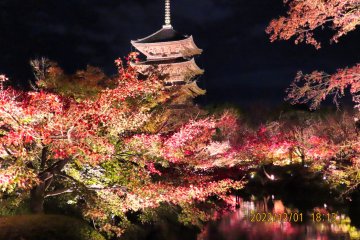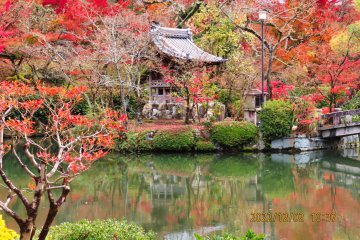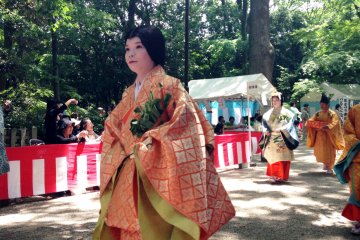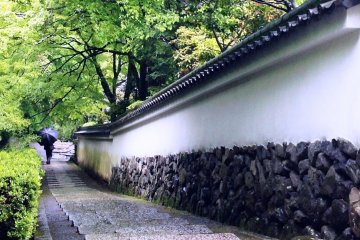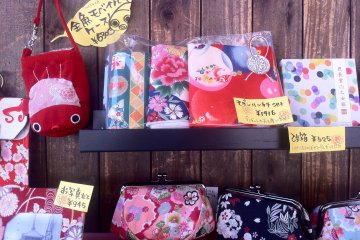Travel & Leisure has named Kyoto as the World’s Best City for the second consecutive year in row, making it a place to visit in every season and time of your life. Even if you can only spare three days, you can truly savour the top ten Kyoto experiences.
Day 1 – Western Kyoto - boats and bicycles
There are many ways to get around Kyoto. The ancients took to horseback, and you can still see this at special festivals, like the Aoi Matsuri. Today, buses are the preferred mode of transport for most tourists, but it can be crowded, especially later in the day. Why not go as locals do, by bicycle. Kyoto is a level city, and away from the main streets, is surprisingly quiet. The side streets are a kaleidoscope of colour and life, with bicycles the best way to experience this. Feel like stopping by one of the many craft stores, or to take a unique photo? You can do that by bike.
Kinkakuji and Ryoanji temples are the two treasures of Kyoto, and they are just a short bicycle ride away from Northern Kyoto.
After that, it is a short ride to Arashiyama. Also known as Storm Mountain, it is everything beguiling about Kyoto in one compact space. From the bamboo groves to the arts and craft shops, there is something for everyone. In the afternoon, you can take in the forests by foot or bicycle or take in the scenery from the quiet of a rowboat.
Day 2 – Eastern Kyoto - dress ups for adults
It is said that in Osaka, people will spend their last penny on food, while in Kyoto, they will spend it on clothes. The colours and patterns that adorn many of the kimonos and handicrafts in Kyoto are best seen in Higashiyama, the eastern hills of Kyoto. Make your way to the foothills of Sannenzaka by foot, for this is one part of Kyoto that you want to avoid by bike if possible. At the top of Otawa Mountain lies Kiyomizu temple, which along with Ryoanji and Kinkakuji would be the top three temples to visit. It is best to get here first thing in morning, before the day trippers arrive. Later in the day you may be able to see some Maiko, or apprentice Geishas, but more often or not, you will see tourists dressed up in stunning pastel kimonos, beckoning you to take a photo with them.
A short train ride away is Fushimi Inari, another popular spot for modern day pilgrims that is made famous in the movie, Memoirs of a Geisha. Make the easy ascent for a pleasant view of south east Kyoto, while the sake breweries are just a short walk away, making most of the spring water that has made its brew so sought after.
Evening sees Kyoto transformed, with red lanterns and warm shopfronts framing the narrow alleyway known as Pontocho. From Jazz bars to Japanese hole in the wall izakayas, there is something to tempt night owls of every variety.
Day 3 – Nagaoka-kyo – before Kyoto began
While Kyoto is rightly known as the ancient capital of Japan, there is actually another capital before Kyoto existed. It is only a short train ride away, but a place that most tourists have not heard of called Nagaoka-kyo. While little remains from 784 A.D, secret gardens and temples can be found. If you are adventurous, take the bus No 66 from Mukomachi railway station, past the market stalls selling bamboo shoots to the last stop at the foothills. Ever since pilgrims first climbed this mountain in the early 8th century, the area around Yoshiminedera has been a place of spiritual beauty.
In the afternoon, you have the choice of going nearby for a tour of the Yamazaki Whiskey distillery, or make your way back to Central Kyoto, where the imperial majesty of the Nijo Castle awaits. For foodies, our top ten ends with a tour of the Nishiki Markets, the kitchen of Kyoto that is known for everything from tofu donuts to the venerable Kyoto pickled vegetables, a staple that stood the test of time from when refrigeration and fast transport was a mere pipe dream.




